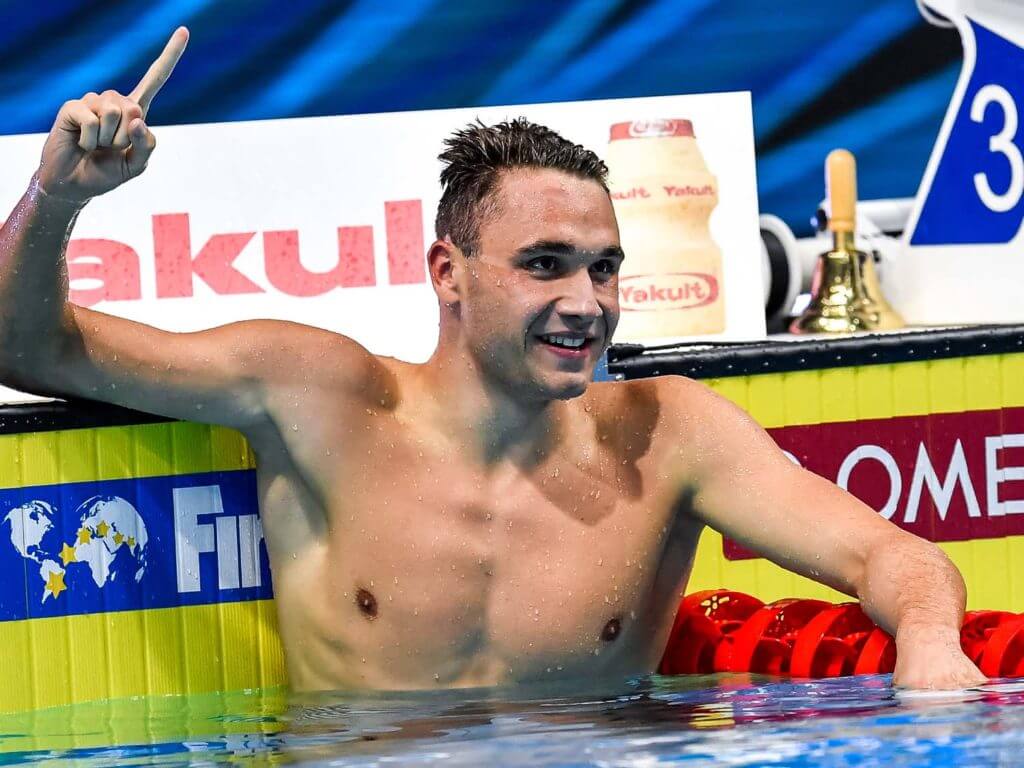“I’m glad I don’t swim the 200 butterfly any more because Milak would crush me,” Phelps has said. “To see him do 1:50 is awesome.”
The Next Great Barrier: Kristof Milak and His Assault on 1:50 in the 200 Butterfly

The Next Great Barrier: Kristof Milak and His Assault on 1:50 in the 200 Butterfly
The date was April 7, 1979. The city was Potsdam. The competition was a clash between the Soviet Union and East Germany, European powers of the era. The swimmer was Sergey Koplyakov, a 20-year-old Olympian representing the USSR. The event was the 200-meter freestyle. The feat? Clocking sub-1:50 for the first time in history.
Sports like swimming and track and field – in one way – endear themselves to history through the clock. First man under (fill in the blank). First woman to crack (fill in the blank). These are moments stitched in time, barrier-breaking feats that are remembered years later. Think Dawn Fraser going sub-minute in the 100 freestyle. Or Jim Montgomery clocking 49.99 in the same event. Flash back to Mary T. Meagher and her demolition of 58 and 59 in the 100 butterfly – same race, such was her ahead-of-its-time greatness.
A 1976 Olympian, Koplyakov was one of several athletes pursuing sub-1:50 in the 200 freestyle. Bruce Furniss was part of the chase. So was Rowdy Gaines. It happened that Koplyakov hit the milestone first, and also ended a 15-year-hold on the event’s world record by Americans. The record remained in the grasp of the Soviet star for a little more than a year, until Gaines took it down to 1:49.16 on April 11, 1980.
Now, 44 years later, the 1:50 barrier has returned as a talking point in the sport.
In 2009, when Michael Phelps lowered the world record in the 200 butterfly to 1:51.51 at the World Championships in Rome, it was a performance difficult to fathom. The 200 fly is one of the events which receives votes as the most-demanding discipline in the sport, and Phelps’ clocking of 1:51-mid positioned him eons ahead of the opposition.
Well, beyond the reach of mortals is where Hungarian Kristof Milak is situated in this current era. The 22-year-old has redefined the event since 2019, when he first broke Phelps’ world record with a 1:50.73 clocking at the World Championships in Gwangju. An Olympic crown followed in Tokyo in 2021, and Milak brought the 200 fly standard to its current status of 1:50.34 at last summer’s World Champs, on home soil in Budapest.
Since ascending the throne, Milak has traveled a path similar to that of Phelps at his peak: Unchallenged. Yes, Phelps had rivals in his other events, notably Ian Crocker in the 100 butterfly and Ryan Lochte in the 200 individual medley and 400 individual medley. But the 200 fly was mostly a different story, as Phelps primarily raced the clock, himself and history – the exception Chad Le Clos’ upset at the 2012 Olympics in London.
Milak knows what it feels like to race alone. During his first world-record outing, he secured gold at the World Champs by 3.13 seconds. The Olympic crown was earned via a 2.48-second margin. And his latest global crown was earned by a 3.03-second edge. Yes, Milak is racing in another realm, his front-half speed beautifully complemented by unmatched finishing power.
And so, it is thanks to Milak that the 1:50 barrier is again in focus. As the Hungarian neared the wall at Worlds, the crowd roaring in appreciation, it briefly looked as if Milak might clock 1:49-something. Ultimately, he was .35 shy of the magical number, but the performance confirmed the potential of such a swim.
In his world-record showing, Milak blasted off the blocks for an opening lap of 24.19. That momentum carried Milak to the halfway point in 51.89. He followed with a third-lap split of 28.62, which had him at the 150-meter wall in 1:20.51. His final length was covered in 29.83, a superb finish, but actually well off the 29.16 Milak managed on the end of his first world record.
This year’s World Championships in Fukuoka and the 2024 Olympic Games in Paris figure to be two of Milak’s best opportunities at going sub-1:50. On the surface, Milak needs to slice an average of .09 from each lap to reach 1:49 territory. The toll of his first 150 in Budapest was too much last summer, but in the days ahead, Milak will either adjust his approach, or build what is necessary to maintain that early speed, but also close in faster fashion.
The bottom line is this: More than four decades after Sergey Koplyakov introduced the world of freestyle to a 1:49 clocking over 200 meters, Kristof Milak is on the cusp of history in the 200 butterfly. The mere thought is tough to digest, but the great ones are capable of pulling off feats that blow the mind.
So, sit back and enjoy this latest march toward history.



